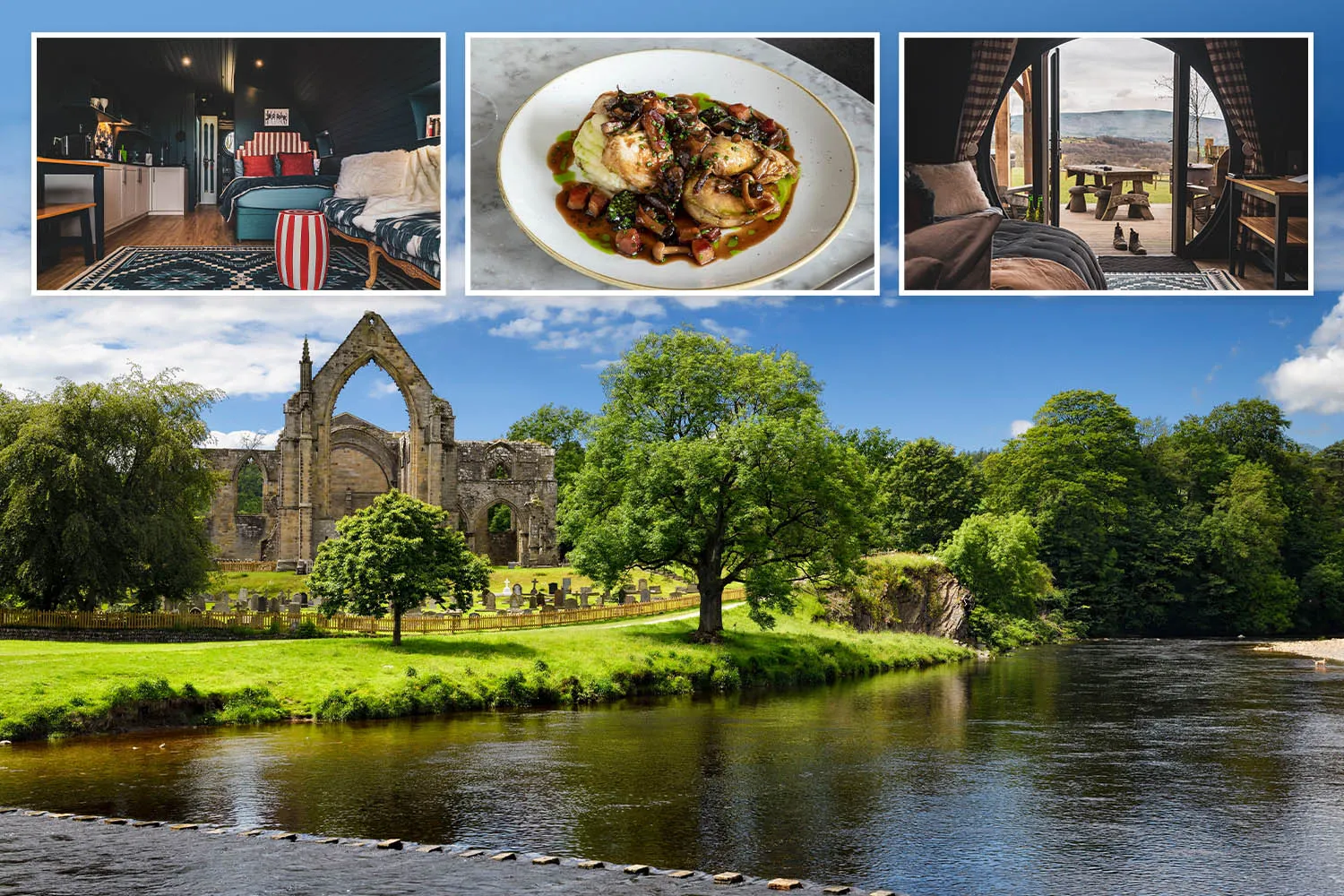Forget the Swiss Alps and live the alpine dream by glamping it up in North Yorkshire

LIVE the alpine dream in a national park, says writer Siobhan Ludlow.
The Yorkshire Dales is the perfect destination for great views and tranquility.
THE PAD
Can’t make it to the Alps this season?
Soak up views of the Yorkshire Dales National Park from the cosy Swiss Ski Station Pod at Catgill Farm instead.
This beaut is decked out with cute alpine touches and comes complete with a ski-lift gondola to sip tipples and snuggle up in, a wood-fired hot tub and a three-in-one fire pit/barbecue/pizza oven.
Lap up more lush countryside vistas from the master bed, while kids will love the bunks.
From spring, Cat’s Kitchen serves up frothy cappuccinos, £3.50, and bacon butties, £5, alongside giant Jenga and Connect 4, and there are walks aplenty from the doorstep.
Don’t forget to pop by to pat the farm’s friendly alpacas, too.
EXPLORE
You’re only a 15-minute walk from the Bolton Abbey estate and majestic Priory ruins, which date back to the 12th century.
If you’re brave enough, take on the stepping stones across the River Wharfe, then follow the fun “welly walk” with its obstacles and balance beams.
Most read in Best of British
Travel back in time (which your tummies will thank you for) with a full English aboard a vintage steam train on the Embsay & Bolton Abbey Steam Railway.
Tickets cost from £25 for adults, £20 for kids (Embsay boltonabbeyrailway.org.uk).
Later, get your history fix exploring Skipton Castle and its pretty castle woods.
Entry costs £10.70 for adults, £6.90 for over-fives (Skiptoncastle.co.uk).
Meanwhile, a five-minute walk from Catgill, Hesketh Farm Park is brilliant for little ones, with its giant sandpit, tractor rides and plenty of animals to pet and feed.
Tickets cost £8 for everyone over two and it reopens in spring (Heskethfarmpark.co.uk).
REFUEL
Reward yourselves for hikes with a mouth-watering côte de boeuf with triple-cooked chips, seasonal greens and red wine jus, £95 for two people, at The Devonshire Arms, just 15 minutes’ walk away (Thedevonshirearms.co.uk).
Meanwhile, Tea On The Green in Bolton Abbey village offers great coffee and traybakes, but the soup with a home-made cheese scone, £9, is an absolute winner (Teaonthegreen.org).
And don’t leave Yorkshire until you’ve been transported to ’50s America at nearby Billy Bob’s Parlour.
Kids will have a riot in the brilliant playgrounds, and you’ll all love its Round The Campfire fluffy pancakes, £10.25, topped with rocky road and Kansas toffee-crunch ice cream, toasted marshmallows, mallow fluff and shards of cinder toffee.
Oh, and not forgetting the dollop of hot fudge sauce, too (Billybobsparlour.com).
BOOK IT
Stays in the Swiss Ski Station Pod at Catgill Farm cost from £189.99 per night (Catgillfarm.co.uk).
BTW
Find 24 acres of woods, a rose garden and Love Brownies tea room at Parcevall Hall.
Or hit nearby Brownie Barn for a choc fix (Lovebrownies.co.uk).


